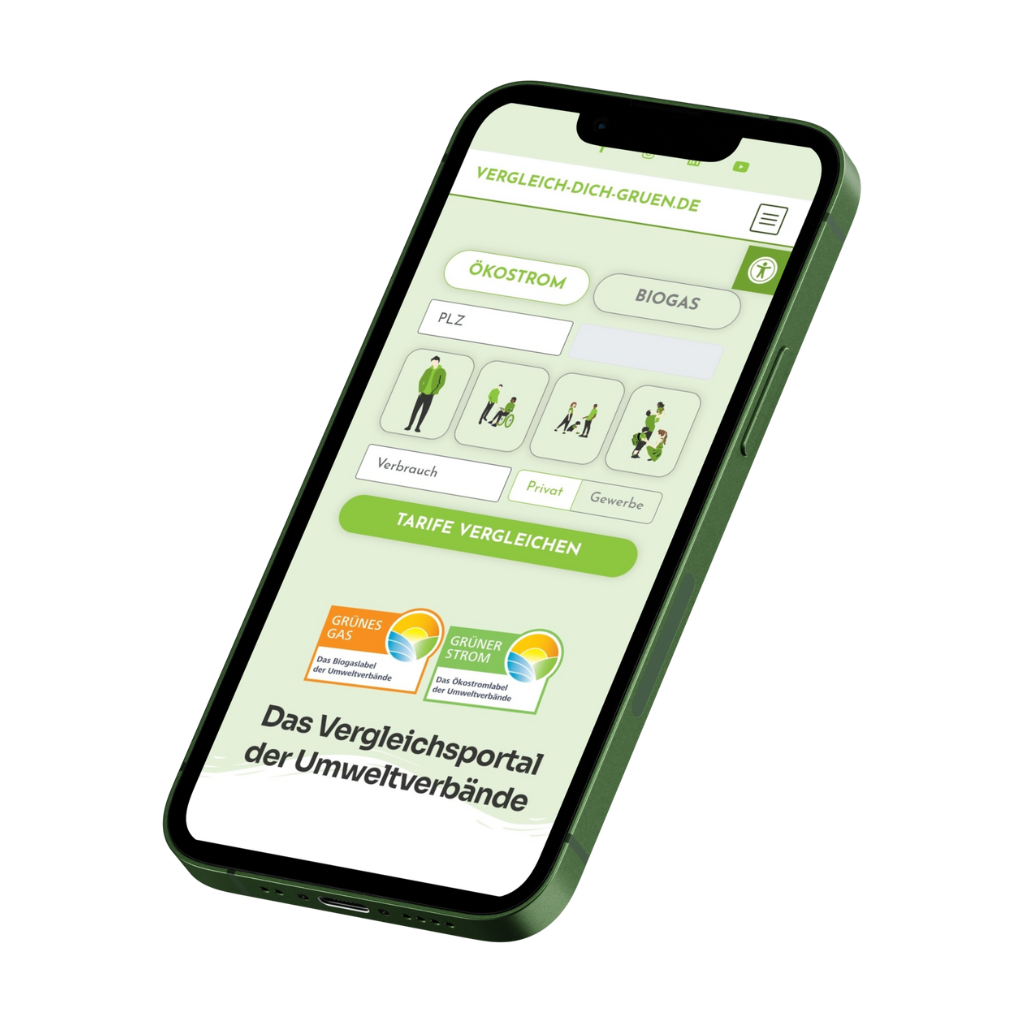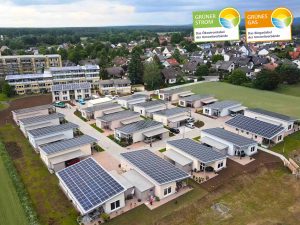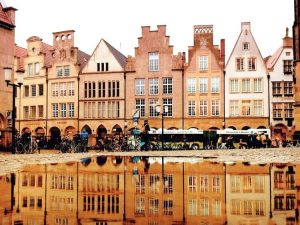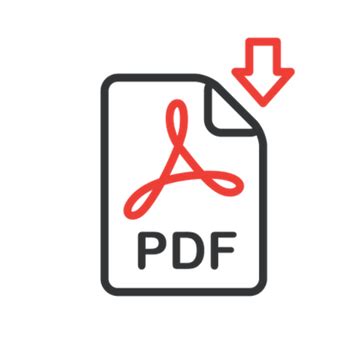FAQ Grüner Strom-Label
What you should know about green electricity
Grüner Strom-Label
Frequently asked questions
With Green Electricity-certified green electricity tariffs, guaranteed investments flow into the expansion of renewable energies. The level of investment is determined by a fixed amount per kilowatt hour consumed. Thus, your green power purchase indirectly influences investments in the energy transition.The funding areas include the mobility transition, energy infrastructure, energy efficiency, and other projects that serve the energy transition, such as nature conservation, development cooperation, and education.
The full range of funding opportunities can be found in the criteria catalog for the Grüner Strom-Label. Selected energy transition projects can be found here.
The term green electricity
Green electricity is electrical energy that comes from renewable sources. It can be generated from solar radiation, wind and water power, biomass, geothermal energy or sewage gas. Electricity from renewable sources is ecologically and socially sound because it protects the climate and reduces the consumption of fossil, finite resources. In addition, it does not produce hazardous waste, such as radioactive waste from nuclear power plants. When you buy green electricity, it doesn't mean that green electricity is actually coming out of the pipe. Every kilowatt hour generated flows into an electricity lake, from which it is then redistributed to end customers. In other words, everyone gets the same physical electricity. But every single green electricity customer helps to make the electricity lake ever greener. However, green electricity does not automatically promote the energy transition. For this, additional investments must be made in the expansion of renewable energies. This is guaranteed by tariffs that carry the Green Electricity label. - -
Electricity from renewable energies is ecologically and socially acceptable because it protects the climate and the environment. Consumption of fossil, finite resources reduced is produced. In addition, no hazardous waste is produced, such as radioactive waste from nuclear power plants.
When you buy green electricity, this does not mean that green electricity actually comes out of the line. Every kilowatt hour generated flows into a Stromseefrom which it is then redistributed to the end customers. In other words, everyone receives the same physical electricity. But every single green electricity customer helps to make the electricity lake ever greener.
- - -
The numerous green electricity tariffsavailable on the energy market differ significantly from one another.
The crucial point with a green electricity tariff is whether consumers are choosing a green electricity tariff with their purchase decision. . . environmentally compatible expansion of renewable energies is subsidized. This is not the case with many green electricity offers.
It is important to make the electricity mix greener, Incentives for the expansion of renewable energies This is where the Grüner Strom-Label comes in: if you choose a tariff that has been awarded our seal of approval, you can be sure that every kilowatt hour you consume will go towards the expansion of renewable energies. The guaranteed investments in the environmentally compatible expansion of renewable energies are an essential Distinguishing feature compared to many other green electricity labels and green electricity tariffs.
Green electricity tariffs for private customers require an investment of at least 0.5 cents per kilowatt hour. Many energy providers also invest more than 0.5 cents per kilowatt hour.
. tariff portal of the environmental associations for switching energy providers. .
For trade customers, the Subsidy contribution are lower due to the higher consumption values: they range from 0.1 cents to 0.4 cents per kilowatt hour.
Yes. Green electricity tariffs do not necessarily have to bear a label. Certification by the Grüner Strom-Label or other seals of approval is voluntary. There are electricity providers who do not have their tariffs independently verified at all. Here, consumers must decide for themselves how credible the offer is.
In addition, it is not the energy providers that are certified, but only the individual tariffs. You can find more information about our certification here.
Origin of green electricity
Every energy provider that sells green electricity to its customers must Guarantees of origin of the Federal Environment Agency (UBA) - that is the legal basis.
Guarantees of origin
A guarantee of origin is an electronic document that works in a similar way to a birth certificate. It certifies how and where electricity from renewable energy sources was produced. At the same time, this document ensures that this quality can only be sold once.
The legally required purchase of guarantees of origin for the sale of green electricity is not sufficient to generate an additional benefit for the environment (see FAQ "What legal rules apply to green electricity?" for an explanation of "Guarantee of origin"). The reason for this is that the guarantees can be traded independently of the actual quantities of electricity.
Only if the so-called Optional coupling the energy supplier actually purchases electricity from a renewable generation plant for its green electricity customers. This is because the electricity and the guarantee of origin then come from the same green power plant. In the case of green electricity certification, such a Coupled electricity supply mandatory. Consumers for whom this is important should ask their electricity provider specifically about this or look out for the Grüner Strom-Label when choosing a tariff.
However, coupled procurement alone is not enough to drive forward the energy transition. It requires the expansion of renewable generation plants - that is THE guaranteed added value of green electricity-certified tariffs (see FAQ chapter "Green electricity with added value").
Green electricity with added value
With Green Electricity-certified green electricity tariffs, guaranteed investments flow into the expansion of renewable energies. The level of investment is determined by a fixed amount per kilowatt hour consumed. Thus, your green power purchase indirectly influences investments in the energy transition.. The funding areas include the mobility transition, energy infrastructure, energy efficiency, and other projects that serve the energy transition, such as nature conservation, development cooperation, and education.
The full range of funding opportunities can be found in the criteria catalog for the Grüner Strom-Label. Selected energy transition projects can be found here.
In the construction of new renewable energy generation plants, Grüner Strom Label e.V. in many cases defines environmental requirements that go beyond what is required by law. This ensures that the subsidies flow into plants with the highest environmental standards.
Before funding can flow into projects, a concept must be submitted and approved by Grüner Strom Label e.V.. In the catalog of criteria for the Grüner Strom-Label you will find more information about this.
Thanks to the customers of the certified green electricity tariffs, energy turnaround projects are being implemented on an ongoing basis. On our Germany map you can see where these plants and projects are located, what capacity they have, when they were built and by which provider they were funded.
Certification process and certified tariffs
The Grüner Strom-Label is the only green electricity label in Germany that is supported by leading civil society organizations. You can find an overview of our supporting organizations here.
The label was created at the end of 1998 on the initiative of EUROSOLAR by several non-profit environmental and consumer associations as well as peace organizations to promote the expansion of renewable energies and to ensure credibility and transparency in the emerging green electricity market. Through the work of the sponsoring associations on the board and in the general meeting, they continue to play a key role in shaping certification to this day. Changes in the label's criteria, for example, must be approved by all the sponsoring associations.
The Grüner Strom-Label is awarded for a green electricity tariff, not for the provider itself. The label criteria therefore relate primarily to the tariff.Thus, the Grüner Strom-Label can be found on tariffs of independent green electricity providers as well as on tariffs of municipal utilities that sell conventional electricity in addition to the certified green electricity.
Nevertheless, the Green Electricity certification also looks at aspects concerning the supplier. For example, the Grüner Strom-Label will not be granted to any company that is still directly involved in a coal-fired power plant on the cut-off date of 1.1.2027, i.e. operates a coal-fired power plant itself or is involved in an operating company with share capital/share capital. Participation in nuclear power plants is also an exclusion criterion.
The electricity suppliers have contractually agreed to have their certified tariffs audited for each calendar year. To this end, they submit documents on the basis of which it is checked whether the criteria of the label have been met.
The results are summarized in an expert opinion and Validated by an independent institute and the Management Board. The Grüner Strom Label e.V. then decides whether the label will be extended and what conditions, if any, are associated with it.
Energy suppliers who would like to receive the Grüner Strom-Label for a tariff apply for initial certification using forms. If there is nothing to prevent certification, Grüner Strom Label e.V. and the supplier conclude a Label agreement The provider then undertakes to comply with the criteria. The label is then issued and the tariff can be sold. You can find more information about the initial certification here.
Subsequently, at the latest audited every two years by Grüner Strom Label e.V. to determine whether the criteria are being were. The expert opinions are then reviewed by the independent GUT Certification Company for Management Systems mbH and the Executive Board. The Grüner Strom Label e.V. then decides whether the label will be extended and what conditions, if any, are associated with it. You can find more information about the certification process here.
Yes, there are costs associated with certification for the label holder:
- a certification fee, which is charged every two years for the preparation of the expert opinions, and
- a label usage fee, which is charged annually and the amount of which depends on sales in the certified tariff.
The office of the Grüner Strom Label e.V. is financed with the label usage fee. It acts as an interface between the energy providers and the association's bodies, supports certification, advises consumers and energy providers, and handles public relations for Grüner Strom Label e.V.
Green power supplier with Grüner Strom-Label
You can find all the energy suppliers that offer certified green electricity here.
Among them are several nationwide providers as well as local and regional energy suppliers. In our tariff portal of the environmental associations for switching energy providers. You will find all tariffs and can easily switch to a real green electricity tariff with a Grüner Strom-Label.
The Grüner Strom-Label will also not be issued to any company that still has a direct stake in a coal-fired power plant as of the reporting date of Jan. 1, 2027, i.e., operates a coal-fired power plant itself or has a stake in an operating company with share capital/share capital.
The aforementioned requirements for the energy provider (no participation in coal-fired and nuclear power plants) also apply equally to direct parent companies that have a stake of more than 50 percent in the label recipient, as well as direct subsidiaries in which the label recipient has a stake of more than 50 percent.
When an energy supplier goes bankrupt, the end customers affected usually fall back into the Basic supply of the local public utility - Electricity and gas therefore continue to flow.
The Grüner Strom Label e.V. requests the energy provider to inform its customers about such a change. As a rule, customers also receive information from their local basic supplier.
This is what we have achieved together
By choosing a certified green electricity or biogas tariff, you are directly supporting the energy transition. For every kilowatt hour consumed, a fixed amount flows into the expansion of renewable energies - that's sustainable thinking.

Switch to a certified green electricity tariff or biogas tariff now!
There are already several online comparison portals for electricity and gas rates. So what's the point of another one?
At the comparison portal of the environmental associations, consumers can compare high-quality and exclusively certified green electricity and biogas tariffs.
compare-yourself-green offers you the opportunity to actively participate in an energy transition that is environmentally friendly, decentralized, citizen-oriented, for the common good, fair and pollutant-free through your purchasing decisions.
Stay up to date
Sign up for our newsletter
Grüner Strom Label e.V. | Kaiserstrasse 113 | 53113 Bonn | Germany
Tel: +49 (0)228 / 522 611-90 | E-Mail: info@gruenerstromlabel.de
Want to learn more?
Then feel free to contact us and follow us on social media.







